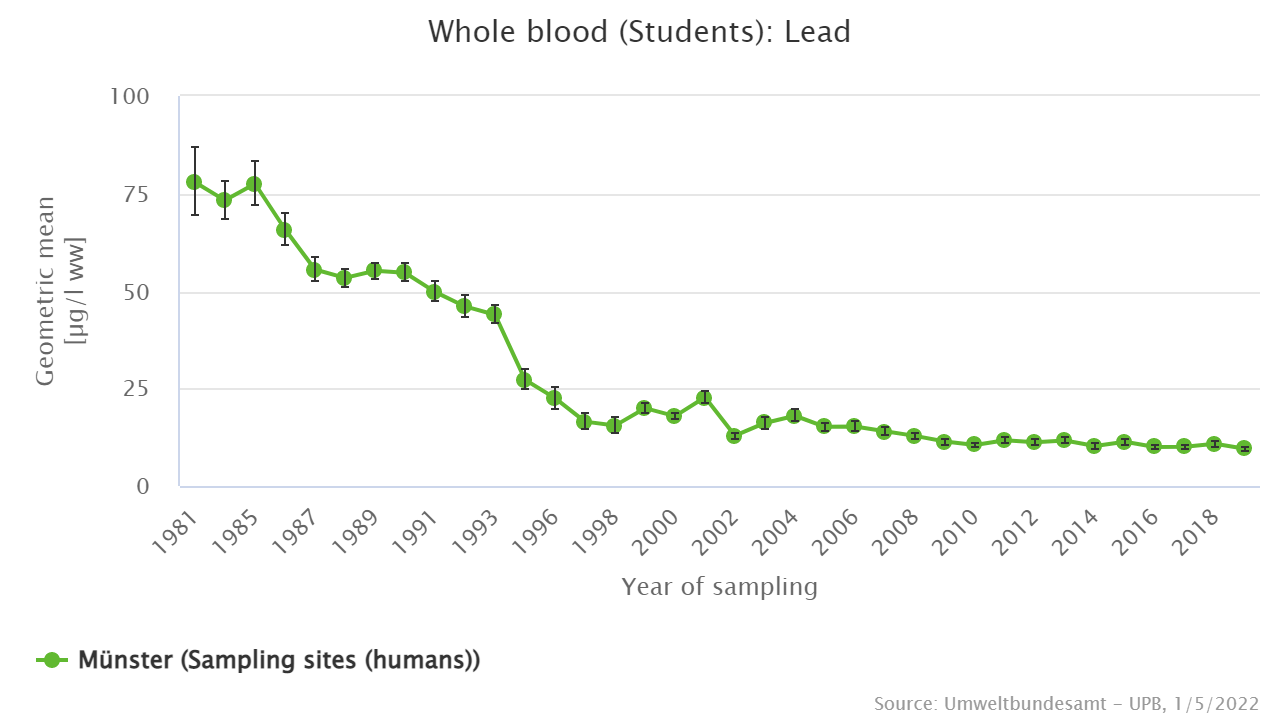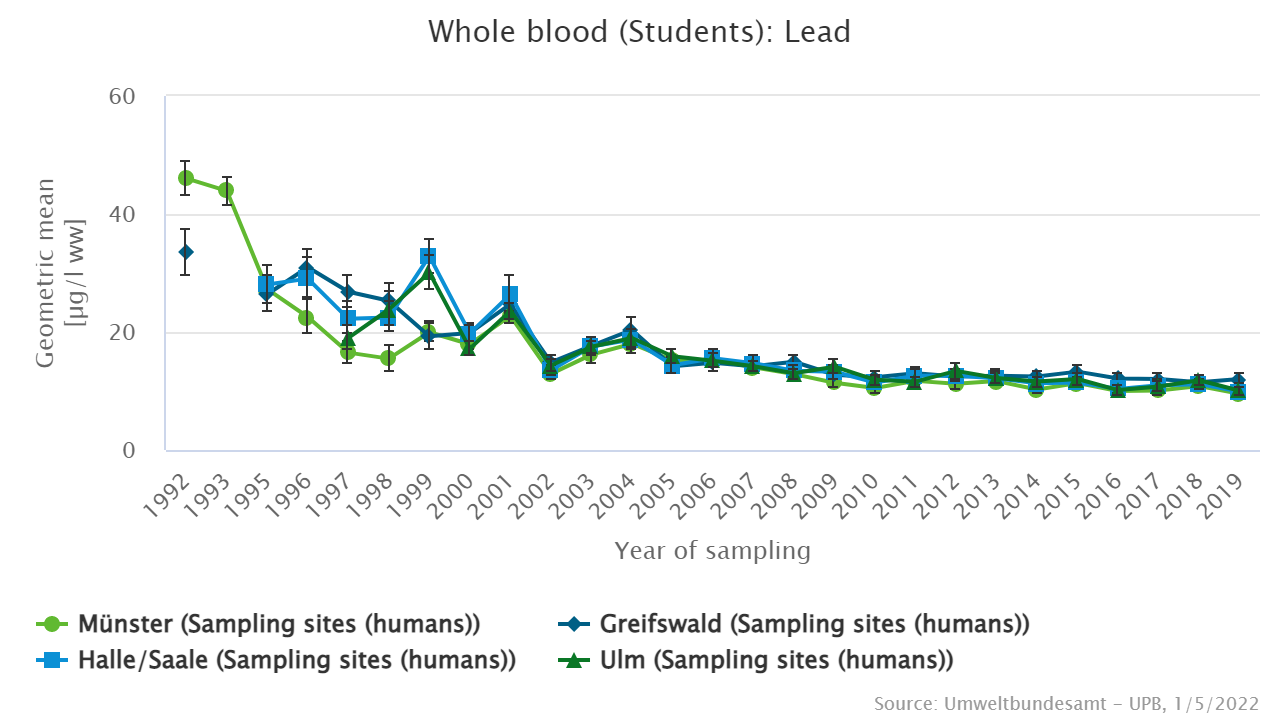Lead in human blood
The lead concentrations in whole blood dropped sharply after the Lead-in Petrol Act came into force; now, they are constantly low.
The lead concentration in whole blood of students from Münster dropped from over 70 µg/L (1981) in 26 years by approx. 83% to values below 15 µg/L (2008). In recent years, lead exposure has remained constantly low: in 2018 the mean lead concentration was only about 10 µg/L.
Based on the data of the Environmental Specimen Bank, the reference values for lead exposure of the general population were adjusted by the German Human Biomonitoring Commission in 2018: for 18-69 year old men from 90 µg/L to 40 µg/L and for 18-69 year old women from 70 µg/L to 30 µg/L. These values are still clearly undercut by the students. In view of the absence of an effective threshold and due to the MAK Commission's classification of lead in category 2 ("to be regarded as carcinogenic to humans"), the Commission has suspended the Human-Biomonitoring values for lead in the blood of all groups of people.

Comparison of East and West Germany
Early measurements showed slightly higher levels of lead in the whole blood of volunteers from the cities in East-Germany (Halle/Saale and Greifswald) compared to the volunteers from the cities in West-Germany (Münster and Ulm). Current data from all four locations is now very similar.

Recommended profiles
Specimen
-
Ideal matrix for most chemicals because it is in contact with the whole organism and in equilibrium with the organs and tissues in those chemicals are being accumulated.
Analytes
-
Naturally occurring poisonous heavy metal
Sampling area
-
4 university cities as sampling areas.